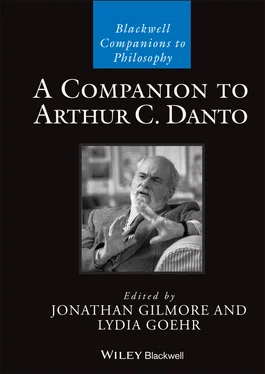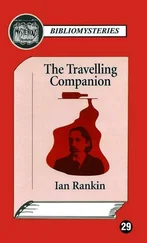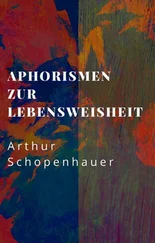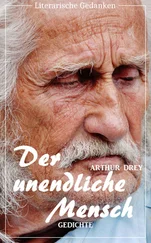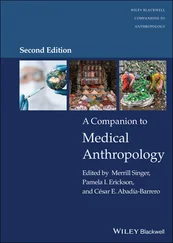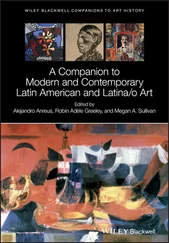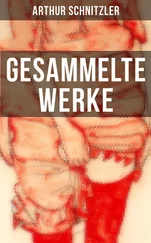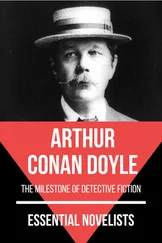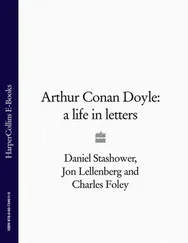A Companion to Arthur C. Danto
Здесь есть возможность читать онлайн «A Companion to Arthur C. Danto» — ознакомительный отрывок электронной книги совершенно бесплатно, а после прочтения отрывка купить полную версию. В некоторых случаях можно слушать аудио, скачать через торрент в формате fb2 и присутствует краткое содержание. Жанр: unrecognised, на английском языке. Описание произведения, (предисловие) а так же отзывы посетителей доступны на портале библиотеки ЛибКат.
- Название:A Companion to Arthur C. Danto
- Автор:
- Жанр:
- Год:неизвестен
- ISBN:нет данных
- Рейтинг книги:5 / 5. Голосов: 1
-
Избранное:Добавить в избранное
- Отзывы:
-
Ваша оценка:
- 100
- 1
- 2
- 3
- 4
- 5
A Companion to Arthur C. Danto: краткое содержание, описание и аннотация
Предлагаем к чтению аннотацию, описание, краткое содержание или предисловие (зависит от того, что написал сам автор книги «A Companion to Arthur C. Danto»). Если вы не нашли необходимую информацию о книге — напишите в комментариях, мы постараемся отыскать её.
Companion
A Companion to Arthur C. Danto
A Companion to Arthur C. Danto — читать онлайн ознакомительный отрывок
Ниже представлен текст книги, разбитый по страницам. Система сохранения места последней прочитанной страницы, позволяет с удобством читать онлайн бесплатно книгу «A Companion to Arthur C. Danto», без необходимости каждый раз заново искать на чём Вы остановились. Поставьте закладку, и сможете в любой момент перейти на страницу, на которой закончили чтение.
Интервал:
Закладка:
Be all that as it may, the above deep methodological differences also underpin the two philosophers’ contrasting images of human action. Danto’s atomistic ontology allowed him to argue, famously, that actions are tokens of a person’s bodily behavior possessing an antecedent cause in an intentional state informed by impinging sensory stimuli. All of the main components of an action, whether that action be, in Danto’s idiom, “basic” or “mediated,” preserve a strict ontological discontinuity between the inner and outer aspects of agency. Such thinking has no place in Dewey’s more teleological and emergent-naturalist model of behavior. There, the neurosensory and cognitive strands of agency are organically interconnected in a way that defies assimilation equally to Cartesian interactionist dualism and classical empiricism’s methodological dualism of concepts versus sensa (or scheme versus content, in the idiom of Donald Davidson’s critique of “the very idea of a conceptual scheme,” which Dewey anticipated and Danto fatefully ignored).
Dewey’s kind of emergent-naturalist model of intelligence presents, in effect, a third alternative to the Cartesian/interactionist and more baldly mechanistic naturalistic models that remained in place for many twentieth-century philosophers. Danto’s long-standing resistance to certain aspects of that alternative would turn out not to be entirely graven in stone. But to appreciate why, consider a couple more ways in which he continued to picture Dewey’s philosophy as opposed to his own.
One large context for that opposition is Danto’s metaphilosophical perspectivism – his view, articulated most fully in Connections , that all significant philosophizing occurs in systems whose conflicts (unlike conflicts between propositions within such systems) cannot be adjudicated in fully cognitive ways. Danto’s philosophy represents one such supposedly settled system; Dewey’s, another. Danto further briefly describes his distance from Dewey by means of a distinction between two antinomically opposed stances about the interrelations of mind, knowledge, and world that, in a familiar and rather open-textured analytic-philosophical idiom, he calls internalism and externalism . In his 1968 Analytical Philosophy of Knowledge , Danto characterizes Dewey and other pragmatists, along with Marxists, as internalists (Danto 168, 234). Three decades later, in the “Internalism and Externalism” chapter in Connections , he revisits this basic dialectic, this time with the meanings of the key terms reversed in keeping with shifting analytical-philosophical usage. Descartes is now a prime specimen of what Danto earlier called Externalism, now rechristened as Internalism. Dewey and classical pragmatism are not explicitly mentioned, with Nietzsche (whom Danto had famously described earlier as a proto-pragmatist) now slotted in as the exemplary Externalist.
Given the pervasive influence of Dewey’s organicist externalism within the twentieth-century Anglophone canon, readers might wonder why Danto would here once again ignore him in a book written in part, after all, as a polemical defense of analytic philosophy’s methods against the imagined threats from pragmatism. My ghost-banishing hypothesis may apply here yet again, but now with a further twist. Connections offers a masterly, if unabashedly partisan, introductory overview of many key lower and higher-order philosophical issues of the day. Danto makes no secret of his own internalist sympathies, but he is dialectically street-wise enough to portray the internalist/externalist dialectic as possessing an antinomical structure, rooted in his deeper perspectivism. To personally prefer one deep ontological or epistemological perspective over another, Danto implies, is one thing; to give conclusive reasons in support of such tastes is another. Like Dewey, he well understood (without going the entire pragmatist distance) that the second scenario of ideal certainty is a Cartesian fantasy. This is hardly the only respect in which Danto’s late philosophy departs dramatically from that of Descartes.
Before we pursue the last point more fully, some discussion is in order regarding another subject dear to both Danto’s and Dewey’s hearts and about which both wrote groundbreaking books: art. (I will here be brief since other chapters in this volume focus more fully on Danto’s philosophy of art.) It might at first seem puzzling that Danto all but ignores Dewey’s Art as Experience through his many art-philosophical and art-critical writings. Here again, we may have a case of ghost-banishing. In any event, The Transfiguration of the Commonplace and such later books as After the End of Art: Contemporary Art and the Pale of History and The Abuse of Beauty , as well as numerous art-critical studies in The Nation and elsewhere, together project a decidedly non-Deweyan vision of their subjects. At its core is Danto’s ahistorically essentialist definition of a work of art as an “embodied meaning,” which is in turn rooted in his neoCartesian model of knowledge as a subject/representation/world triangulation.
Contrast this with Dewey’s more anti-representationalistically framed approach to the question of what is art. According to Art as Experience , a work of art is literally an action and not a product. More exactly, it is a consummatorily charged form of the organism/environment transaction that Dewey calls “ an experience,” embodied (as are all experiences for Dewey) in a stretch of intelligent behavior that resists reduction to the kind of atomistically basic and molecularly mediated agency that is fundamental for Danto. Everything in this argument, including its further emphasis on the felt qualitative unity within all fully realized experiences in the arts and elsewhere, presupposes the basic antirepresentationalist and enactivist analysis of intelligent behavior that is central to Dewey’s mature experimental pragmatism.
Here the two writers’ temperamental clash along the internalist/externalist axis surfaces again. But it does so in a way possessing now more obvious normative stakes, especially amidst postmodern-era debates about the politics of recognition across various global and cultural divides both within and without the artworld. A comparative reading of their philosophies of art needs to keep in view the fact that whereas Dewey wrote in the heyday of prewar high aesthetic modernism ( Art as Experience appeared in 1934) and was critiquing that era’s philosophical art/life divisions from within, Danto, writing from a more postmodern vantage point, was selectively reconstructing those divisions, historically speaking, from without. There is little question, in any case, that Dewey would have viewed Danto’s art product- and Artworld-centered, and visual art-privileging philosophy of art as a sophisticated variant of what Art as Experience attacked as the modernist-era “compartmental” or “museum” conception of art. One also imagines Dewey being tempted, in view of both Danto’s views about knowledge and his practice of generally using “art” interchangeably with “visual art,” to call Danto’s philosophy of art a spectator theory of its subject, in a double sense. For Danto’s theory makes the experience of the spectator – and paradigmatically the spectator of canonically visual artworks, as distinct from the audiences of other arts such as literature, music, dance, and cinema – more explanatorily central than that of the creating artist, even while it also appeals epistemologically to a version of what Dewey called the “spectator theory of knowledge.” 4For Dewey, there are no spectators – in his epistemic sense of that term – of anything, given that all thought is both intertwined with behavior and aspires to the condition of (remember his example of the reaching child) inquiry. And all inquiry is internally bound up in the culturally and historically specific contexts he calls “situations,” which no form of representation can fully transcend. (These also include political situations, such as that of modern democracy – another major context for Dewey’s writings on philosophy and art.)
Читать дальшеИнтервал:
Закладка:
Похожие книги на «A Companion to Arthur C. Danto»
Представляем Вашему вниманию похожие книги на «A Companion to Arthur C. Danto» списком для выбора. Мы отобрали схожую по названию и смыслу литературу в надежде предоставить читателям больше вариантов отыскать новые, интересные, ещё непрочитанные произведения.
Обсуждение, отзывы о книге «A Companion to Arthur C. Danto» и просто собственные мнения читателей. Оставьте ваши комментарии, напишите, что Вы думаете о произведении, его смысле или главных героях. Укажите что конкретно понравилось, а что нет, и почему Вы так считаете.
